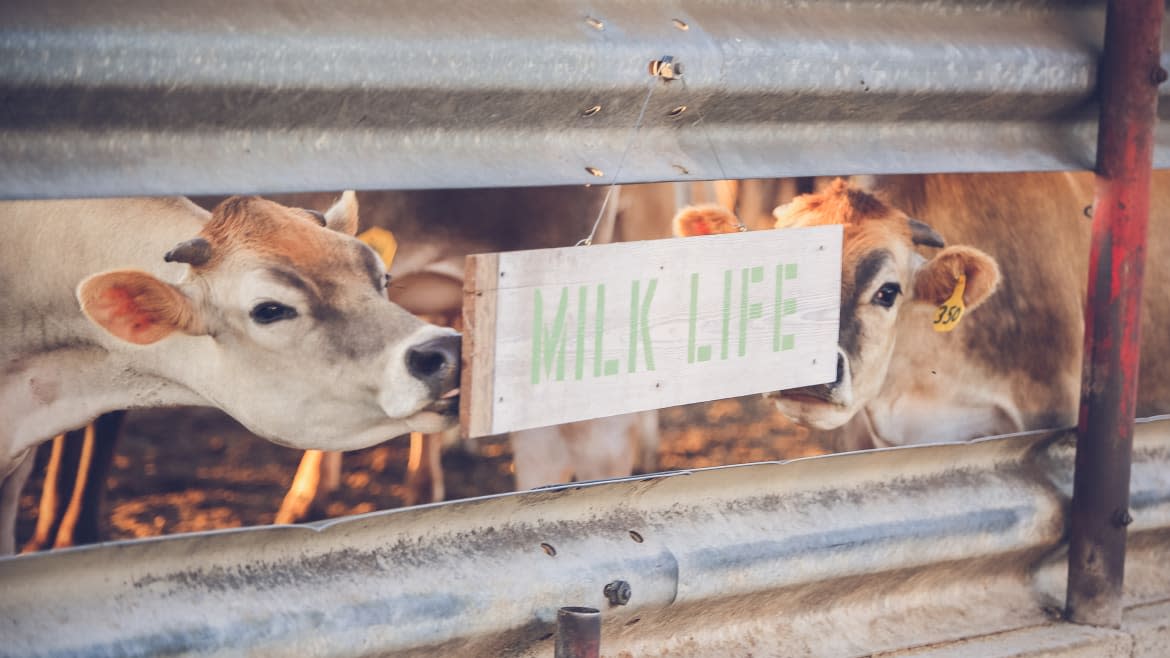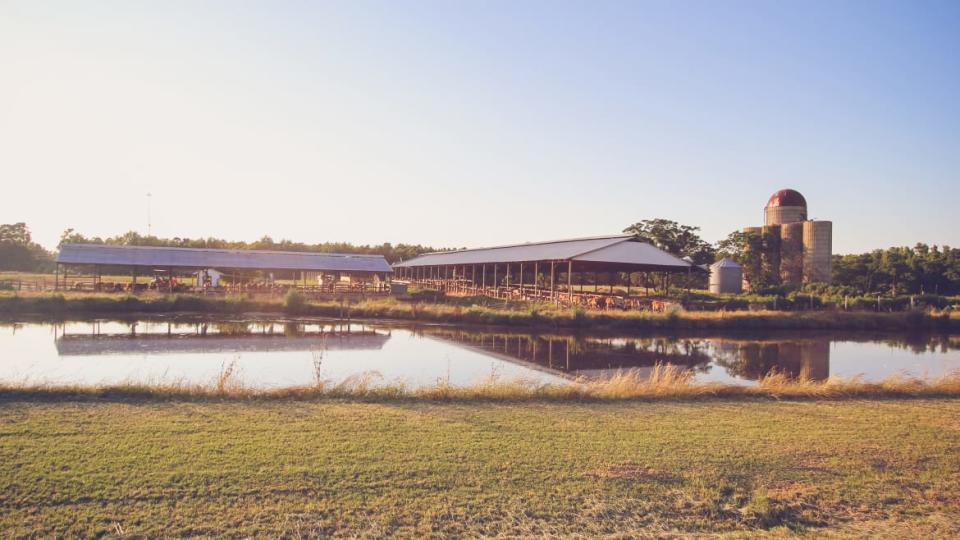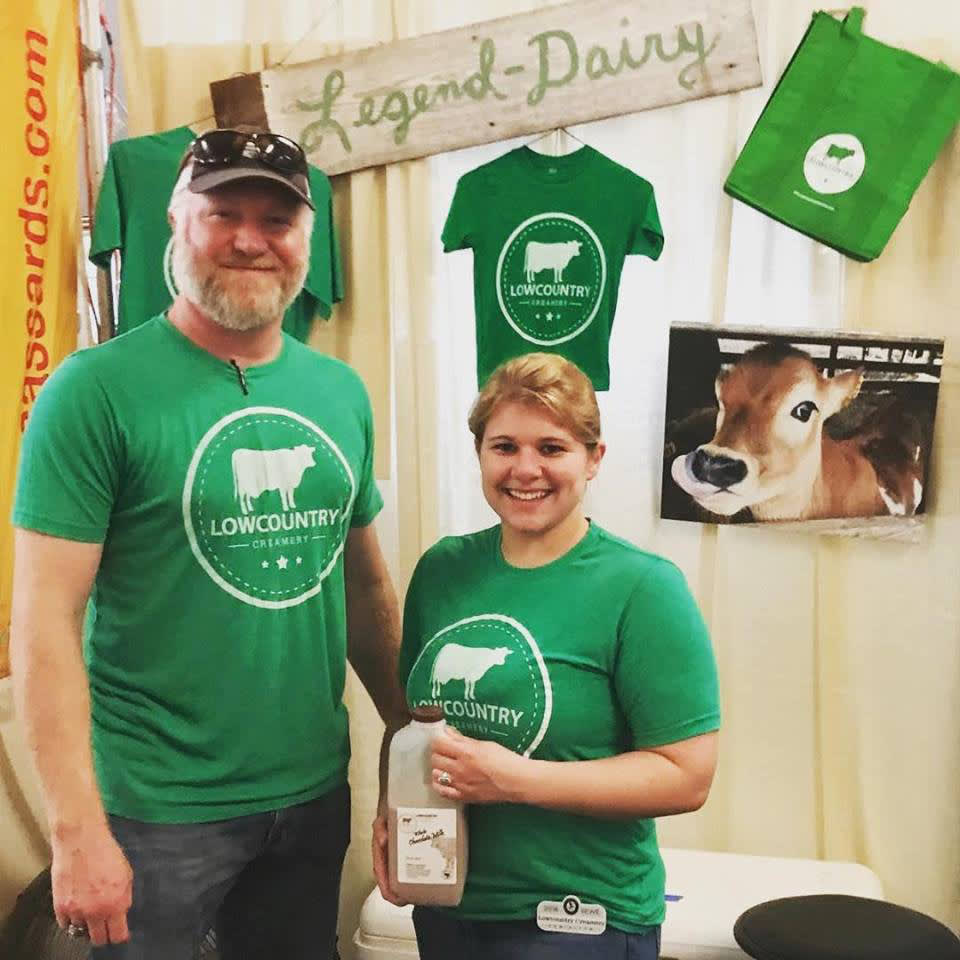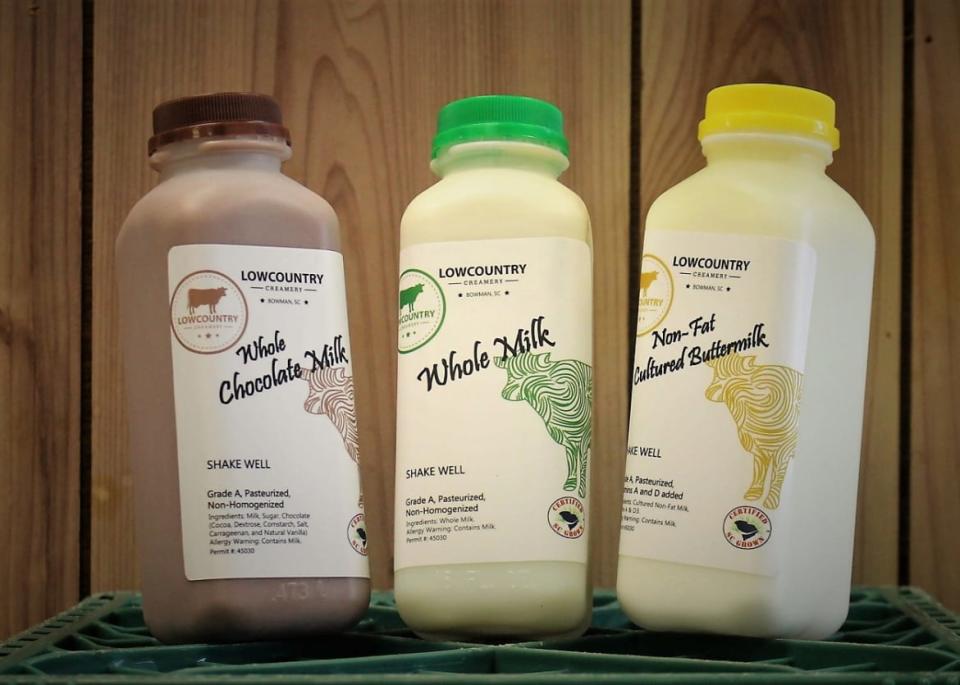The Best Milk We’ve Ever Tasted Is Sold at a South Carolina Truck Stop

The spot on the map where Interstate 26 crosses Interstate 95 in Bowman, South Carolina, seems arbitrary, pencil lines scratched in a Capitol Hill basement during the Eisenhower era. And while some 40,000 cars may pass on a typical day, we’d bet almost none of the folks speeding through these cornfields and cypress swamps know it’s home to some of the finest crème-fraiche this side of Normandy.
Yes. Head west on I-26 from the big cloverleaf, over Cow Castle Creek, take the first exit—number 165, a lonely one with two two-pump gas stations (fifty-cent premium over prevailing prices; execrable summer heat)—and pull into the station to the south and head into the Quick C Food Mart.
Between a cornfield and the ghost slab of a long-gone truck stop, the Quick C will transport you back to a time when shopkeepers chain-smoked indoors, sold canned pork brains from dusty shelves and Cheerwine in bottles from struggling refrigerators. But around the back of the convenience store, through a side-door, you’ll find a spotlessly clean tiled room with shining stainless-steel tanks that produce some of the nation’s most exquisite dairy—crème fraiche, Swiss and Greek yogurt, buttermilk, and full-fat whole milk—in the nation. Oh, and there’s full-fat chocolate milk for the young and young at heart. This is Lowcountry Creamery, the Breaking Bad of dairy.

We first met red-bearded Patrick Myers in the humid chaos of a kitchen tent at a food festival, where he was proffering sample quarts of crème-fraiche to chefs laboring to stay focused. Our first thought was: In this heat? Then we tried it and ended up circling back to Myers’ coolers a dozen more times that day. Turns out we’re not only ones hooked on his wares. Jason Stanhope, the James Beard Award-winning chef of the restaurant FIG in Charleston recalls the first time he tasted Lowcountry Creamery’s whole milk. He’d been searching for years for dairy that tasted as good as the not-strictly-legal raw milk supplier he’d been using.
“Oh my god,” Stanhope said. “I could taste the grass again! Winter hay! Summer buckwheat!”
Stanhope switched his kitchen over to Lowcountry Creamery, starting with the whole milk his chefs use to make ice cream and to culture their own fromage blanc and cottage cheese. Lowcountry’s crème-fraiche soon followed—“It’s got this great, lactic tang and is super-creamy” per Stanhope, who features it as a base for pureed, chilled soups or whipped into quenelles to top a berry tart. Now FIG uses every cultured product Lowcountry offers, including the Swiss and Greek yogurts in vinaigrettes for winter lettuces.
About five years ago, Myers fashioned the back-of-the-convenience-store creamery out of the unusual space his grandfather operated as a restaurant in the 1950s—it was easy, with floor drains and municipal water already on site. But today the three pasteurization vats installed in the far corner are presided over by Lauren Clemency. Clemency was pursuing an Animal Science degree at North Carolina State when her dairy club passed through Bowman en route to a symposium in Savannah in 2016. Patrick and his partners, Kent Whetsell, and Josh Brooks, gave the group a tour and samples of the milk.
“It was the best milk I’d ever tasted in my life,” said Clemency. Myers explained to the dairy club that their biggest challenge was finding labor—anyone interested in working a small value-added dairy operation in Bowman. They just snagged a grant specifically for finding help.
“I raised my hand,” Clemency recalled, “I said to them: ‘I’m graduating this May.’”
“It was serendipitous,” said Myers. “We needed to kick into the next gear, and she was there—and she wanted to move to Bowman, South Carolina?”

Myers had received his animal science degree at Clemson, where he met his partners. The four-generation Myers family farm on the other side of I-26 is where the 180-odd dairy cows graze and where the milk is harvested. “We were in hobby mode—and some would say we still are,” he admits. Until Clemency came along, he did almost all the pasteurizing and culturing, bottling, cleaning, and transporting; now Myers sticks to administrative duties and shares the creamery work beyond the 40-50 hours Clemency puts in every week.
Soft spoken, but methodical and sharp, Myers is a natural salesman, and yet Lowcountry Creamery has never actively marketed their products, to ensure they don’t outstrip supply. “We haven’t really attempted to sell—funny to say that, but I haven’t been into a coffee shop to say ‘Buy our milk.’” They have dreams and plans of expanding to a purpose-built dairy closer to the cows, that would allow them to house the kind of modern machinery that pasteurizes and bottles 500 gallons per day. (Clemency currently processes that much in a 40-hour week.)
“Farther down the road, we want to get into agritourism,” Clemency says. “We’ve tossed around the idea of bringing in a cheesemaker, someone to do ricotta and pulled mozzarella, rather than figure it out ourselves.” Clemency believes in the future growth potential beyond exit 165, and Myers and his partners have granted her a 10-percent stake in the business to help guarantee she stays for the journey.
As delicious and alluring to chefs as the cultured yogurts, buttermilks, and crème fraiche (with more than 40-percent butterfat) may be, it’s the whole milk that sustains a dairy operation, despite being its lowest-margin product. So, Clemency spends the first days of the week pasteurizing and bottling whole milk, then most of Thursday on the cultured products. Once the new equipment comes in at the new location, the three vats they have now will be dedicated full time to the sexier stuff. “We’re currently dancing the cultured products around the milk production,” Myers said.
As for their whole milk, their biggest-growth accounts have turned out to be coffee shops across the Lowcountry, some of which committed to buying exclusively from Lowcountry Creamery from the first taste-test. “People might not notice milk in their food, but they definitely perceive it in their coffee—it changes the texture,” said Clemency.
“It’s really cool hearing coffee-shop owners say, ‘Best latte ever,’” Myers said. “That’s something I can take with me to other shops.”

And if you can’t get to a coffee shop in Charleston or Summerville, or if you’re ever traveling I-95 or I-26, it’s worth availing yourself of a few gallons of gas and milk at exit 165. The Quick C sells Lowcountry Creamery in gallon jugs on the bottom shelf of that struggling refrigerator—nearly $1,000 worth every month.
And as exciting as Lowcountry Creamery’s successes may be, it’s humbling to consider their current output consumes just 10 percent of the milk their cows produce: the other 90 percent of this liquid gold gets collected by the the co-op tanker truck, commingled with the product of other farms, and delivered throughout the southeast.
It may appear to be grocery store milk, but at least for now, every carton contains a secret.
Get our top stories in your inbox every day. Sign up now!
Daily Beast Membership: Beast Inside goes deeper on the stories that matter to you. Learn more.
